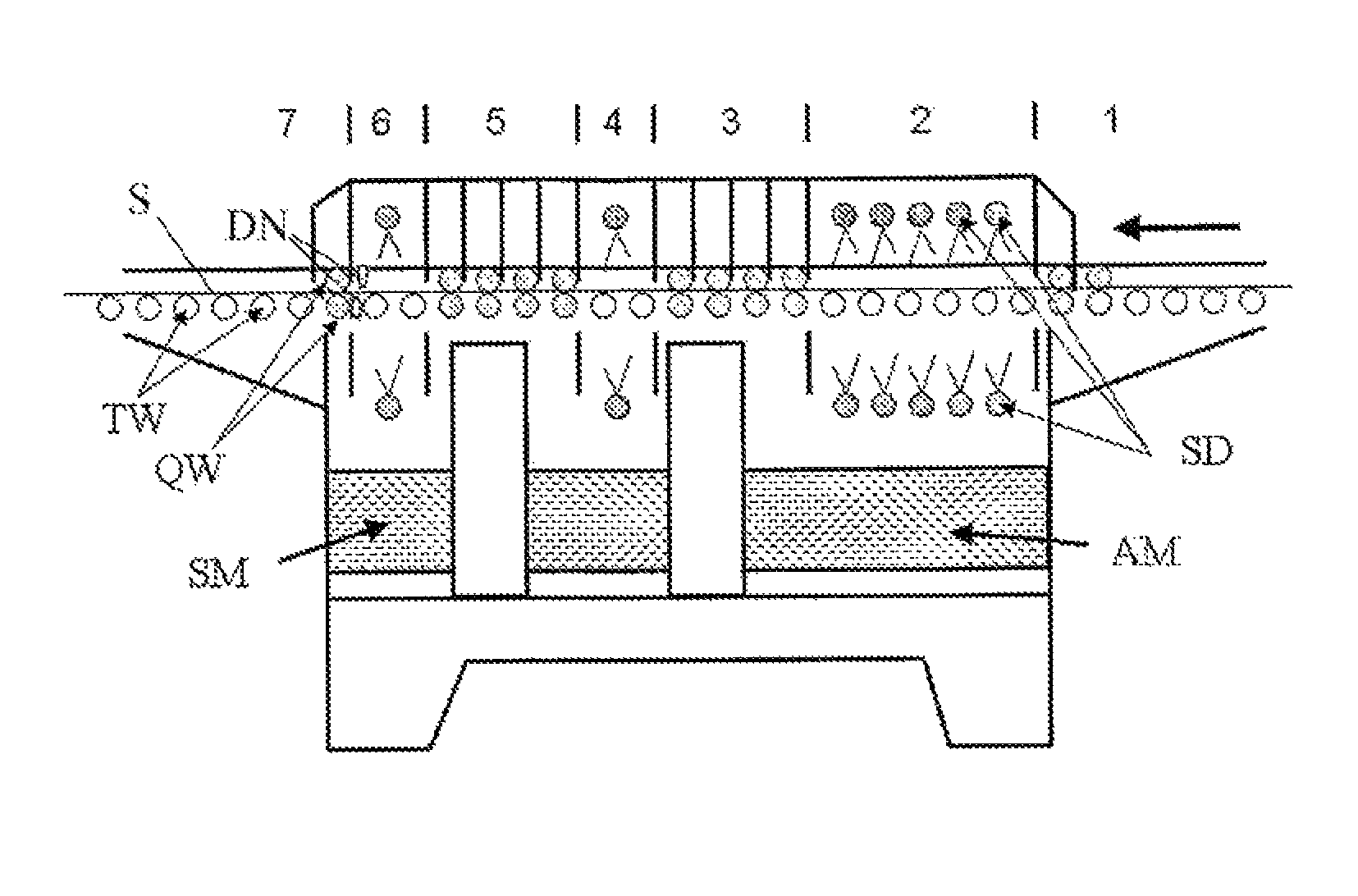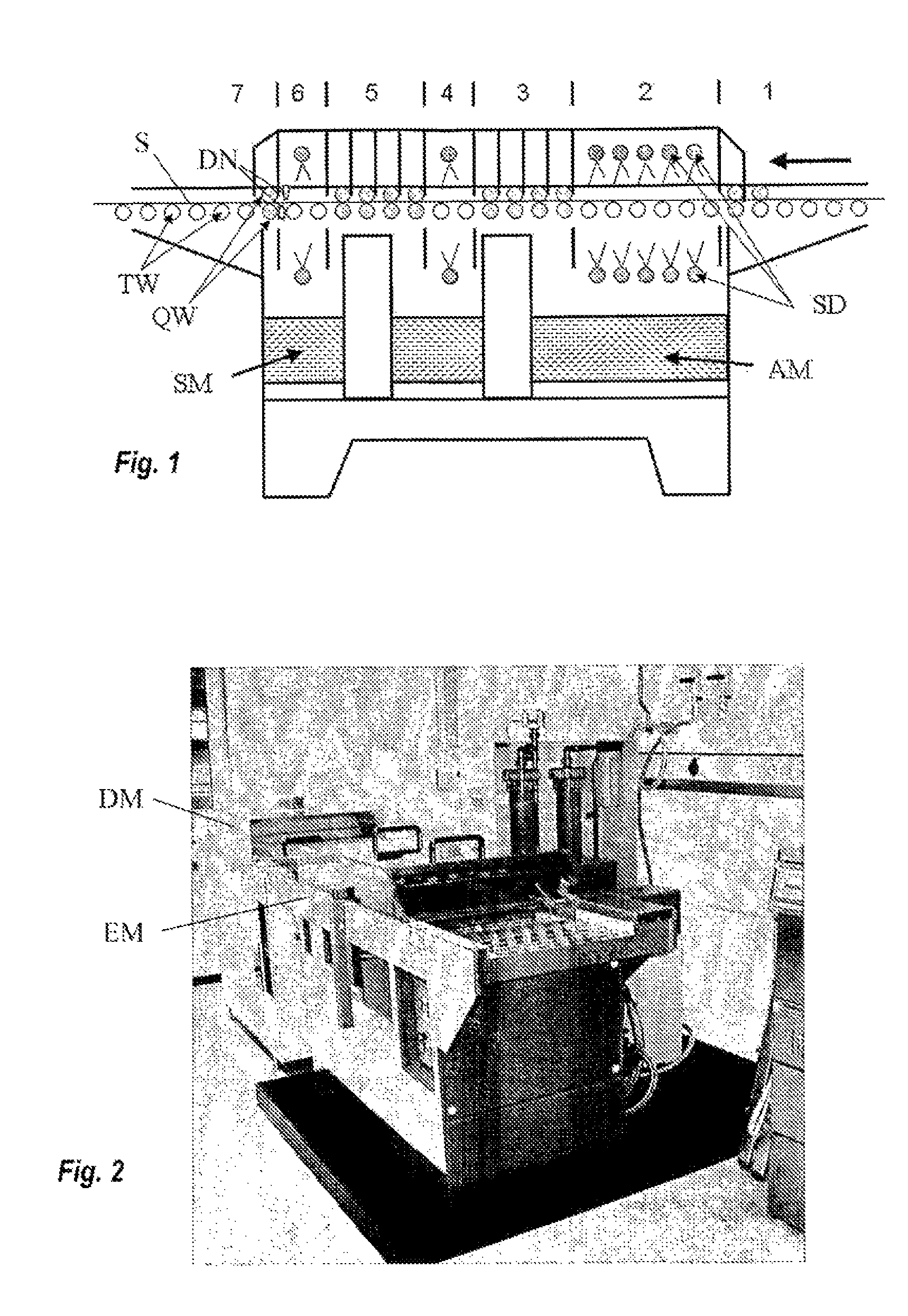Process and device for cleaning and etching a substrate with a transparent conductive oxide layer
a technology of transparent conductive oxide and cleaning process, applied in the direction of superimposed coating process, semiconductor device, coating, etc., can solve the problems of inability to easily scale up the art method, manual execution leads to inevitable, and no industrial solution currently exists for wet chemical etching
- Summary
- Abstract
- Description
- Claims
- Application Information
AI Technical Summary
Benefits of technology
Problems solved by technology
Method used
Image
Examples
Embodiment Construction
[0045]The current demonstration machine is quite flexible and can receive substrate sizes from 10×10 cm2 up to 40×40 cm2. An adaptation to further sizes is possible without difficulty. When using fixed substrate sizes, it is conceivable that the narrow transport rollers are only provided on the edges of the chambers and thus only come into contact with the substrate at the border of the ZnO / glass substrate. This would be of advantage, since consequently the glass does not come into contact with a conveyance system, including with the bottom side, and thus ideally is not subject to any potential contamination and / or other effects.
[0046]For the use of flexible substrates, a so-called roll-to-roll process is conceivable, in which a ZnO coated flexible film (metal, synthetic) is used instead of glass substrates, which film is unwound from a reel at the intake side of the device and rewound at the output. A dry film would be advantageous here.
[0047]The horizontal position of the substrat...
PUM
| Property | Measurement | Unit |
|---|---|---|
| surface area | aaaaa | aaaaa |
| thickness | aaaaa | aaaaa |
| thickness | aaaaa | aaaaa |
Abstract
Description
Claims
Application Information
 Login to View More
Login to View More - R&D
- Intellectual Property
- Life Sciences
- Materials
- Tech Scout
- Unparalleled Data Quality
- Higher Quality Content
- 60% Fewer Hallucinations
Browse by: Latest US Patents, China's latest patents, Technical Efficacy Thesaurus, Application Domain, Technology Topic, Popular Technical Reports.
© 2025 PatSnap. All rights reserved.Legal|Privacy policy|Modern Slavery Act Transparency Statement|Sitemap|About US| Contact US: help@patsnap.com


